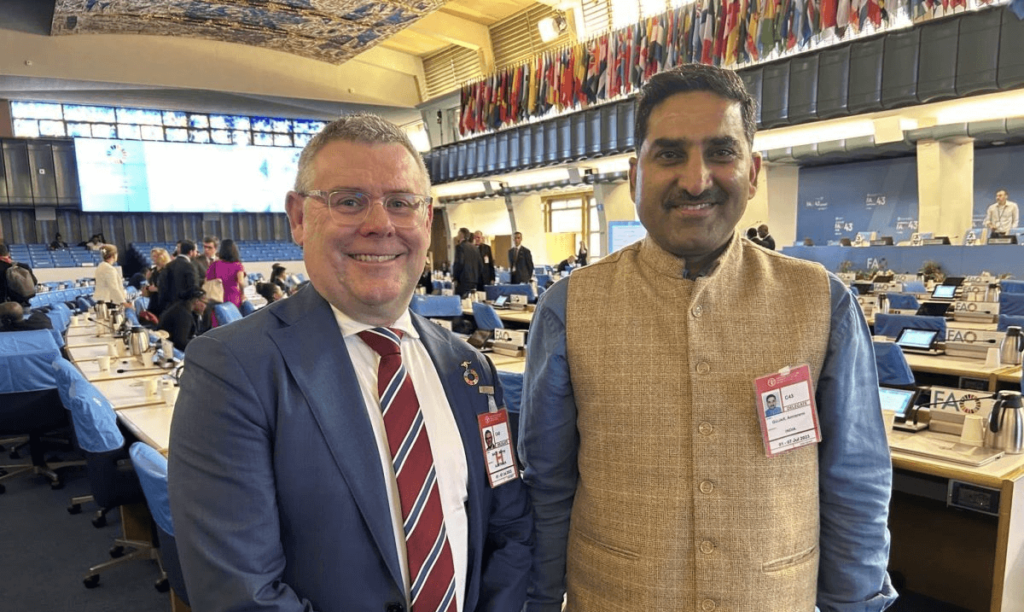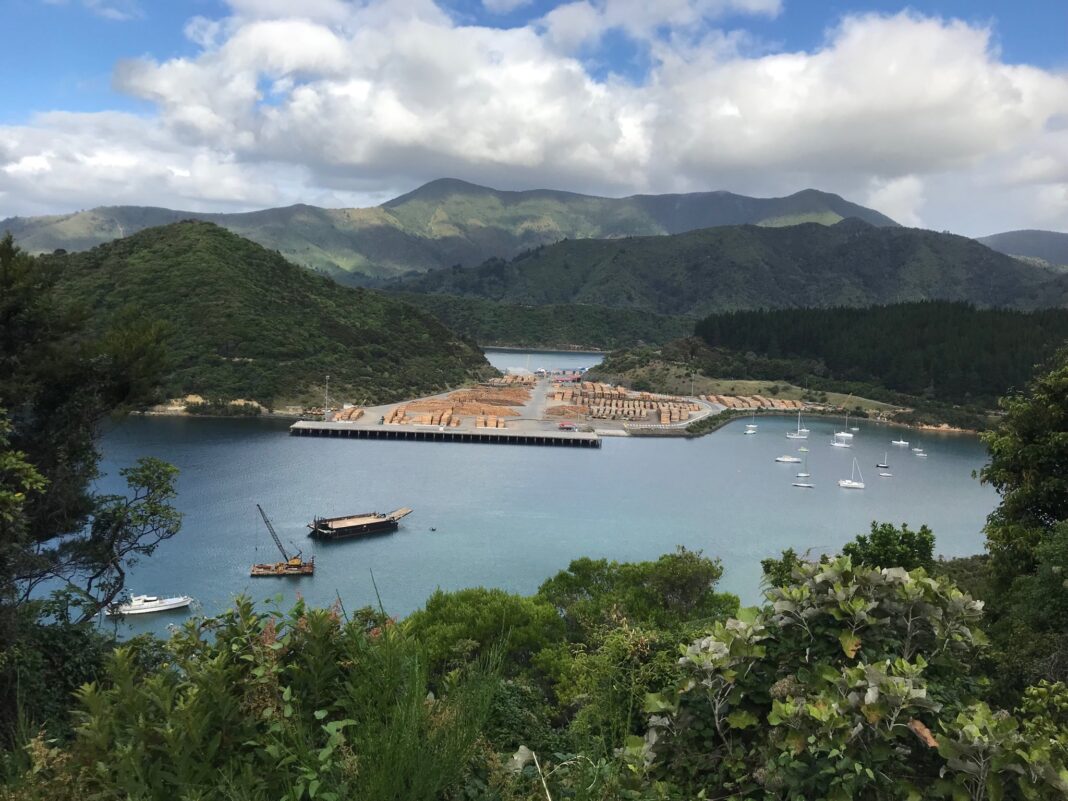NZ is looking to strengthen its trade relationship with India, but it is not an alternative market to China…yet.
That is according to one of the leaders of the largest NZ business delegation to head to India.
Stephen Jacobi, the executive director of the NZ International Business Forum, said that whilst India has great potential, it is not China in access terms.
“…The Chinese market is open, and they want to buy what we have. I know their economy is going through a rough patch, and India, on the other hand, is bucking the trend, but it’s not tomorrow that you’ll change that around.”
India, currently the world’s fifth-largest economy, is bucking the global trend by growing at 6% per year.
A booming real estate market is fueling its growth, and according to ITTO research, demand for Roundwood will increase by 70% over the next decade, from 57 million cubic metres in 2020 to 98 million cubic metres in 2030.
Mr Jacobi is part of a 50-strong delegation leaving for Delhi on Sunday, including representatives from the Employers and Manufacturers’ Federation, Export New Zealand, and the New Zealand International Business Forum.
Michael Fox, Chair of the India and New Zealand Business Council is leading the delegation with forestry identified as one of seven priority areas by the Indian government with the delegation.
Mr Fox said the delegation hoped to get deals inked during the trip but was being realistic.
“We hope deals get done during this visit, but delegation participants are intent on taking a medium-term approach to trade and investment,” he said.
New Zealand has failed to secure a Free Trade Agreement with India, but Mr Fox said that in the absence of a comprehensive agreement, “there is still an opportunity to grow the relationship.”
In May, Wood Central revealed that India was a potential market for NZ forest products amid the slowdown in Chinese activity.
Nonetheless, India is a lower-priced and more challenging market, with Australian softwood prices – which now make up 95% of Australia’s exports – experiencing a 30% drop in prices at the port.
“For all that export volumes spiked in April and May, the price was the victim,” IndustryEdge said earlier this month.
“Trade to China may not always have been satisfactory, but the occasional slumps in export prices to India are also nothing to write home about.”


Mr Jacobi does not think India is an alternative to China “any more than the UK or Europe is an alternative to China.” He also revealed that the trip “is not about making progress on an FTA (free trade agreement).”
The delegation follows a report earlier published by the India-NZ Business Council, which called on the NZ Government to “get serious about India”.
It said 15 years of trying to negotiate a free trade agreement with India had “delivered nothing”, noting “, India is different and requires a different approach”.
Australia is currently negotiating an FTA with India, with both countries already committed to eliminating 20% of tariffs on forest and wood products and 15% on sandalwood chips over the next six years.

According to the NZ Herald, dairy trade is one of the biggest hurdles to an NZ FTA with India.
India is the world’s biggest milk producer.
Council chair Earl Rattray said, “You cannot copy and paste trade agreements typical of those with Europe, the UK and North Asia for India.”
The delegation will be the third time Mr Jacobi has travelled to India over the past eight months. India is one of the NZ International Business Forum’s key priorities for 2023.
“Let me clarify; this is not about making progress on the FTA.”
“This is about progressing the relationship as a whole, though New Zealand will always be interested in an FTA.”
Mr Jacobi said India was executing trade negotiations worldwide, “but it tends to be with very large partners where it can see a huge strategic advantage for itself.”
The delegation’s bid to “pivot” ties with India was in response to a perceived lack of understanding in New Zealand about the potential of two-way people, skills and product flow between the two countries.
“I’m not sure we have in place the necessary building blocks for getting a future FTA off the ground,” Mr Jacobi said.
“We haven’t understood how New Zealand can contribute to India’s economic development.”
“We haven’t nurtured the right constituency, so we are starting again to build the relationship first.”
“Our relationship with India just does not reflect the strength and resilience and momentum of the Indian economy, nor does it reflect what New Zealand can offer.”
Trade between the two countries has declined over the past decade.
Wood Central reports total services and merchandise exports to India in 2020 were worth NZD 1.7 billion.
Wood products, metals and wool dominated merchandise exports last year, with NZ exports standing at NZD 430m with contributions from high-value dairy ingredients such as whey proteins and lactose, kiwifruit, apples and pears, sheep meat and meat by-products.

Last year’s import value from India, NZD 355m, exceeded the export value.
According to Simon Bridges, CEO of the Auckland Business Chamber, New Zealand wasn’t “remotely” reaching the commercial potential in a country with 1.4 billion people.
Mr Bridges said NZ should aim to be in the high-quality, premium product market and “we shouldn’t neglect what India has to offer us.”
Modern India is quite different from the New Zealand perceptions of 30 years ago.
“Today, it is a very youthful, sophisticated, talented and highly skilled country. This is a mutual benefit situation here,” Mr Bridges said.
The NZ Herald reports that potential markets include aviation training, education, technology services, agritech, horticulture, food and beverage, and dairy.
“There could be deals even in complicated areas in the diary….it doesn’t mean to say we can’t do anything within dairy,” Jacobi said.
“There are issues (barriers) in horticulture; there are issues in services that can be addressed comprehensively, which don’t necessarily foreclose the opportunity to negotiate a comprehensive agreement later on.”
As it stands, China is NZ’s largest export market for forest products, and by a substantial margin.
Last month the NZ PM noted that forestry was among New Zealand’s top three exports to China, along with dairy and meat, adding that China is its largest offshore market.

According to the NZ Ministry of Primary Industries, more than 55% of NZ’s log exports are tied to China, with slower-than-expected Chinese economic growth to blame for prices dropping 21% over the past 12 months.






